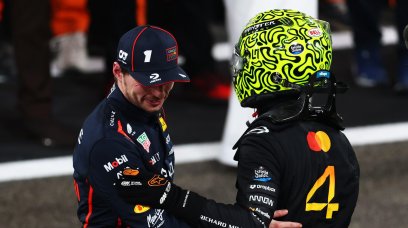Timing is everything in Formula 1 - and so it is vitally important that drivers and teams know exactly how fast they are at certain points around the track. To help with this, each track on the calendar is split into three sectors - essentially sections of the track. Through each of these segments of track - roughly equal in length - are the timing loops. These are what you see on screen during Practice and Qualifying when a driver is on a flying - or timed - lap. But how is a green sector different to a yellow one in F1 and what does a purple sector mean?
F1 sector colours explained
In F1, the three main sector colours used are purple, green, and yellow- and are used to determine just how fast a driver has gone through each sector on a lap. A purple sector in F1 signifies that the driver has just set the fastest time through that segment of the lap. For example, if Lewis Hamilton goes purple in Sector 1 of a lap, it means that nobody has gone faster and it is the best time of the weekend. Moving on, a green sector in F1 is used to acknowledge a driver setting a personal best through that portion of track. Should Hamilton pump in a green time in Sector 2, it means that he has set his best time through it - but somebody else has gone even faster. Finally, a yellow sector in F1 means that a driver has not recorded a personal best. If yellow flashes up for Hamilton in Sector 3, it means he has not recorded a personal best though it. You might have also noticed a little purple clock appearing by a driver's name during the race. This is used to inform that the driver has just set the fastest lap of the race - with a bonus point on offer. To qualify for it, the driver must finish inside the top 10. Should a driver claim fastest lap but finish 11th or lower or even retire from the race, they are still credited with the fastest lap, but do not receive any bonus points.
Most read







